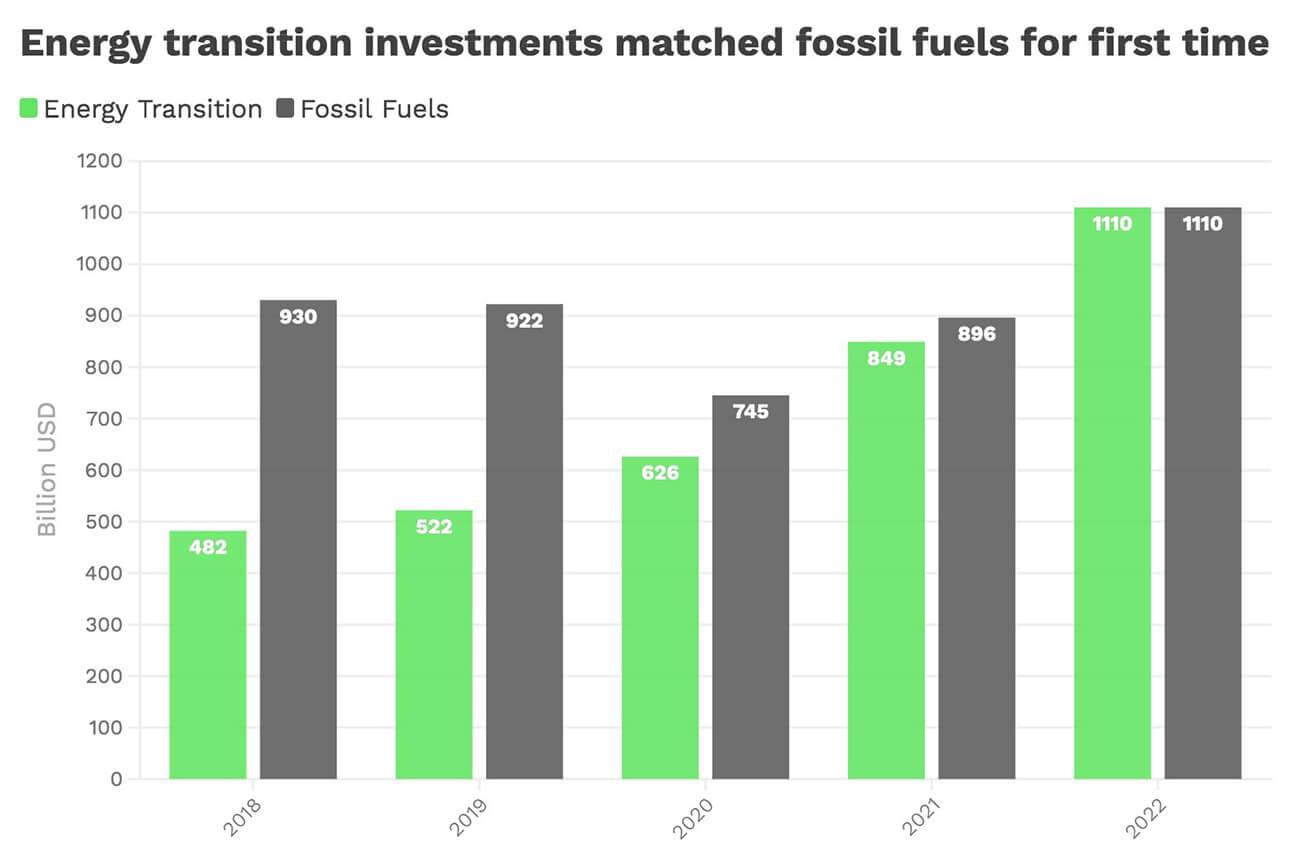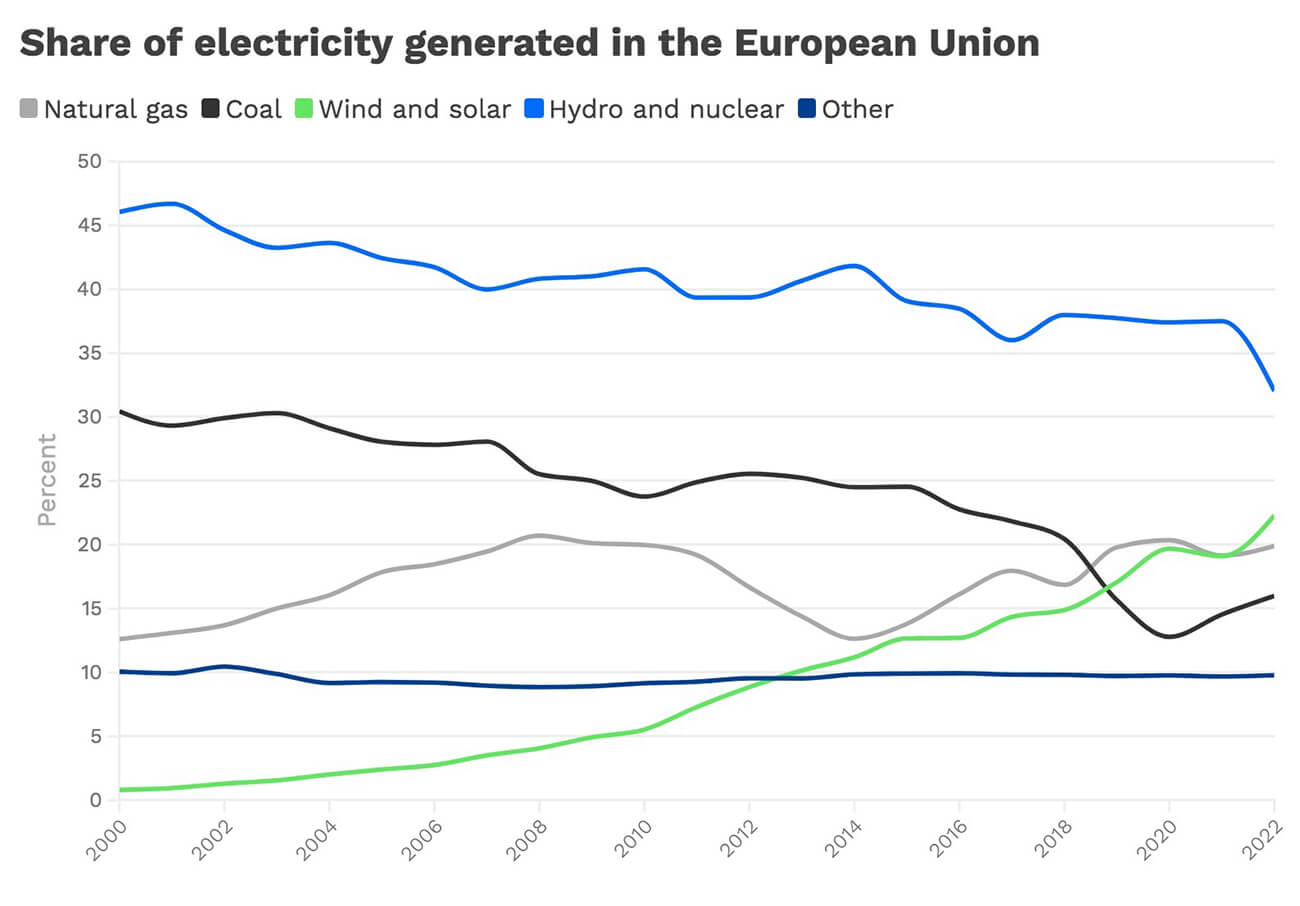In Europe and around the world, clean energy records broken
Data Dive
Records broken in Europe and around the world show the energy transition in action, at times driven by geopolitics.
At the global level, 2022 was the first year investments to deploy clean energy technologies surpassed the $1 trillion mark and put them on par with fossil fuel investments, according to new data from BloombergNEF.
In the European Union, wind and solar overtook natural gas for the first time to generate a fifth of the bloc’s electricity last year, a record amount, according to a report out this week by the energy think tank Ember.
Taken together, wind and solar were Europe’s largest source of electricity when compared to other sources individually, as Carbon Brief noted.
As Europe scrambled to replace increasingly dwindling supplies of natural gas from Russia—historically the bloc’s biggest supplier—the share of coal power increased by just 1.5 percentage points to provide 16% of the EU’s electricity needs, the report found.
The shocks of 2022 only caused a minor ripple in coal power and a huge wave of support for renewables. Any fears of a coal rebound are now dead.
On top of the gas crisis sparked by Russia’s war in Ukraine, the EU also faced the lowest levels of hydro and nuclear power generation in at least two decades, due to an acute drought and outages at French nuclear reactors. The resulting deficit equalled 7% of Europe’s total electricity demand in 2022.
Record growth in wind and solar, as well as lower electricity demand in the last quarter of the year, helped cushion that deficit, according to the analysis.

Source: Ember “European Electricity Review” • Data is from 2022. “Other” includes less significant sources of electricity such as bioenergy, geothermal energy and fossil fuel generation from oil and petroleum products.
At the global level, investments in renewable energy, including wind, solar and biofuels, achieved a new record of $495 billion committed in 2022, up 17% from the year before, the BloombergNEF report found. Electrified transport, including spending on electric vehicles and connected infrastructure, almost overtook renewables with $466 billion spent in 2022, a 54% year-on-year increase.
Even with these impressive gains, the report states global investments in low carbon technologies need to triple immediately to meet society’s goal to essentially emit zero emissions by 2050.